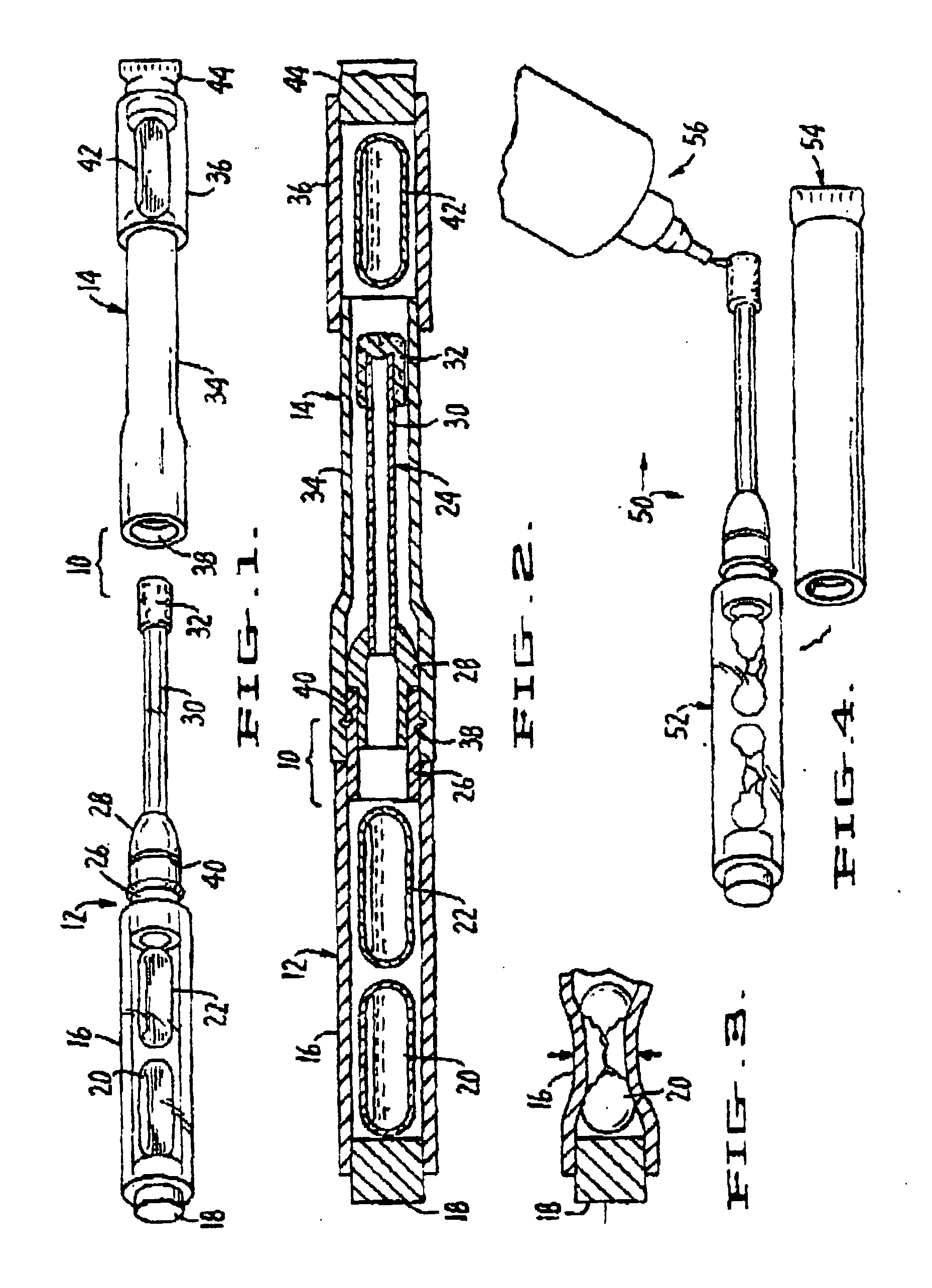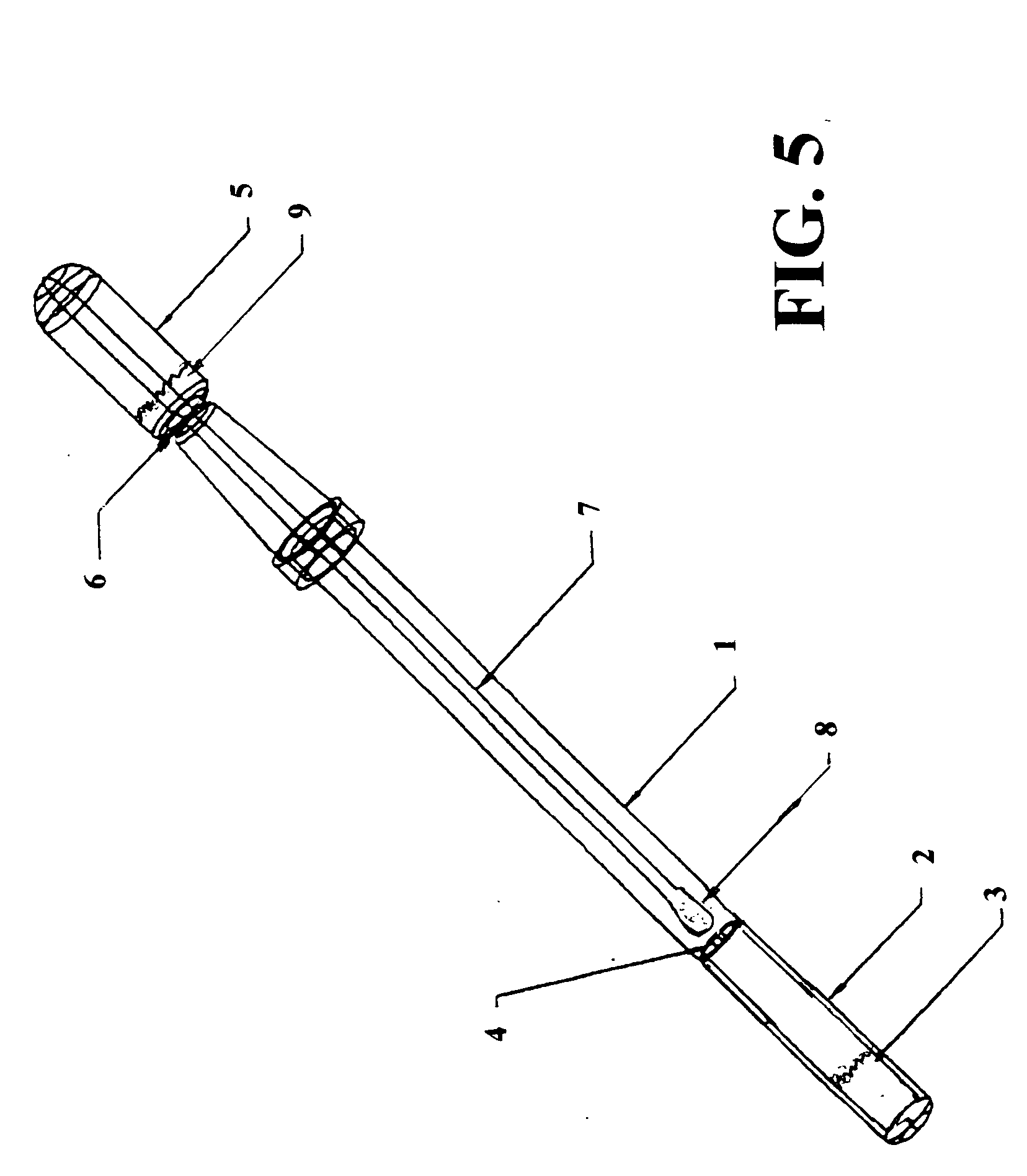Methods and apparatus for the rapid detection of microorganisms collected from infected sites
a microorganism and infected site technology, applied in the field of diagnostic methods, reagents and apparatus, can solve the problems of slow and expensive methods, unsatisfactory quick diagnosis, and inability to detect microorganisms in time, etc., and achieve the effect of reducing the number of microorganisms and reducing the number of infections
- Summary
- Abstract
- Description
- Claims
- Application Information
AI Technical Summary
Benefits of technology
Problems solved by technology
Method used
Image
Examples
Embodiment Construction
[0028] Referring now to FIG. 1, there is shown a diagnostic swab and testing device 10 embodying the present invention.
[0029] As seen in FIG. 1, diagnostic device 10 is comprised of a swab unit 12 and a swab cover unit 14.
[0030] As best seen by comparison of FIGS. 1 and 2, swab unit 12 is comprised of a hollow cylindrical barrel or handle member 16 which is closed at one end by a plug 18. Plug 18 is preferably affixed in the position shown in FIGS. 1 and 2 by cementing.
[0031] Barrel 16 contains, in the embodiment of FIGS. 1 through 3, a pair of reagent ampoules 20, 22.
[0032] After the insertion of reagent ampoules 20, 22 the end of barrel 16 is closed by a swab shaft assembly 24, comprised of a sleeve 26, a bushing 28, a hollow shaft 30, and a swab tip 32.
[0033] As best seen in FIG. 2, sleeve 26 is cemented into the end of barrel 16 opposite plug 18, and bushing 28 is cemented into sleeve 26. Hollow shaft 24 is cemented into the smaller central bore of bushing 28, and swab tip ...
PUM
| Property | Measurement | Unit |
|---|---|---|
| fluorescent | aaaaa | aaaaa |
| color | aaaaa | aaaaa |
| pH | aaaaa | aaaaa |
Abstract
Description
Claims
Application Information
 Login to View More
Login to View More - R&D
- Intellectual Property
- Life Sciences
- Materials
- Tech Scout
- Unparalleled Data Quality
- Higher Quality Content
- 60% Fewer Hallucinations
Browse by: Latest US Patents, China's latest patents, Technical Efficacy Thesaurus, Application Domain, Technology Topic, Popular Technical Reports.
© 2025 PatSnap. All rights reserved.Legal|Privacy policy|Modern Slavery Act Transparency Statement|Sitemap|About US| Contact US: help@patsnap.com



